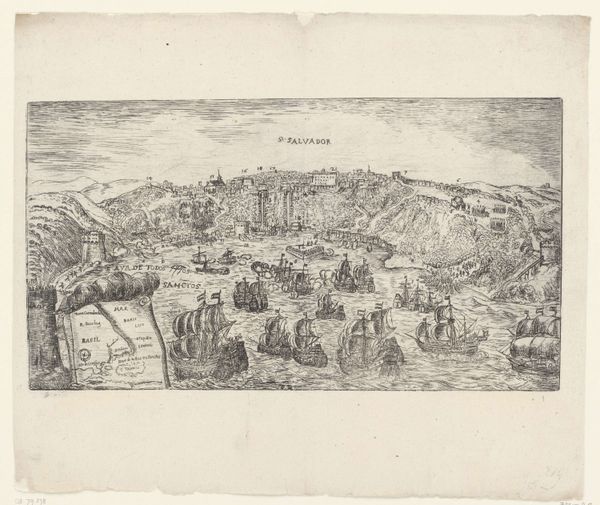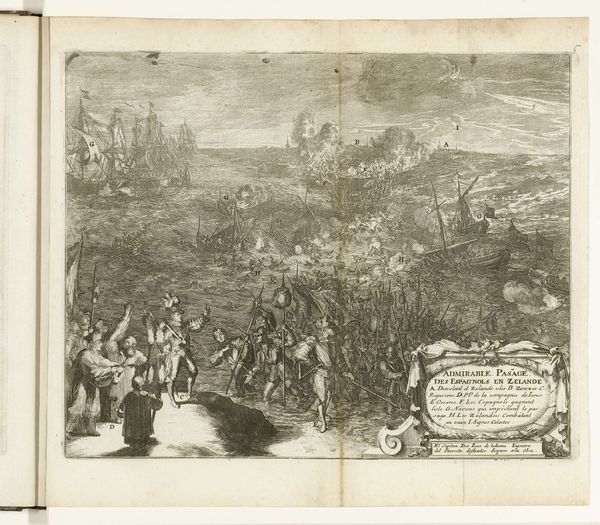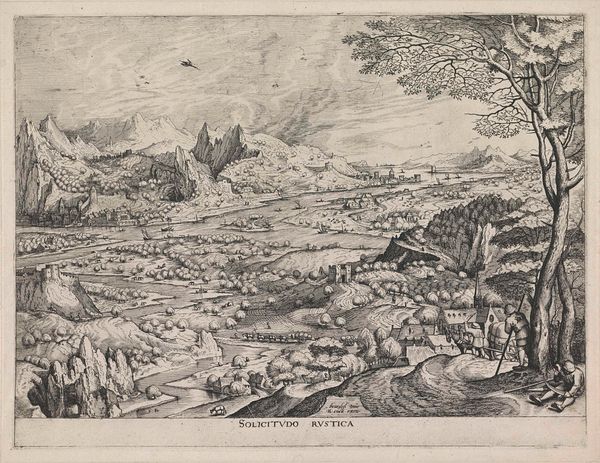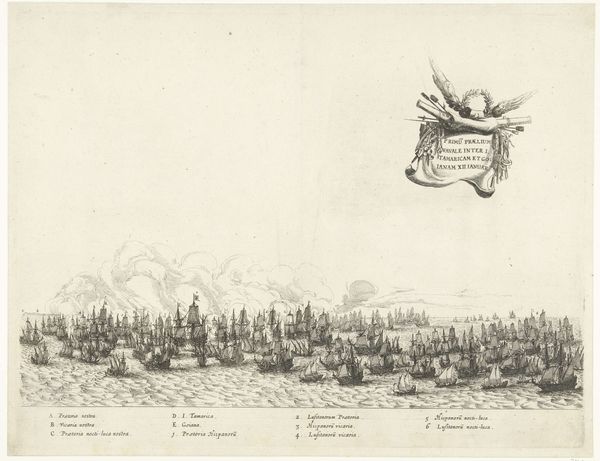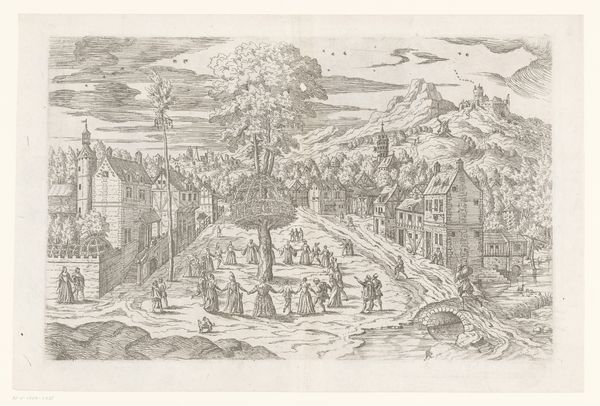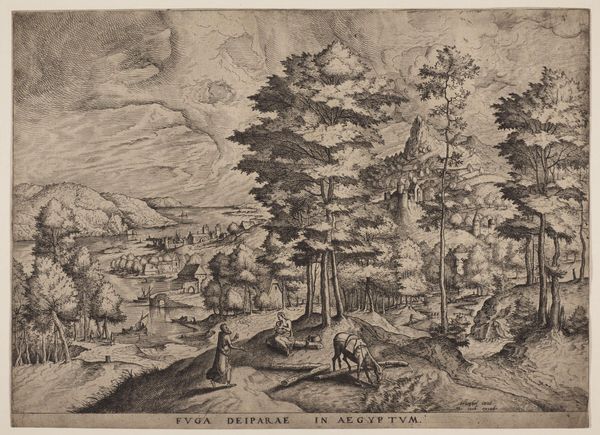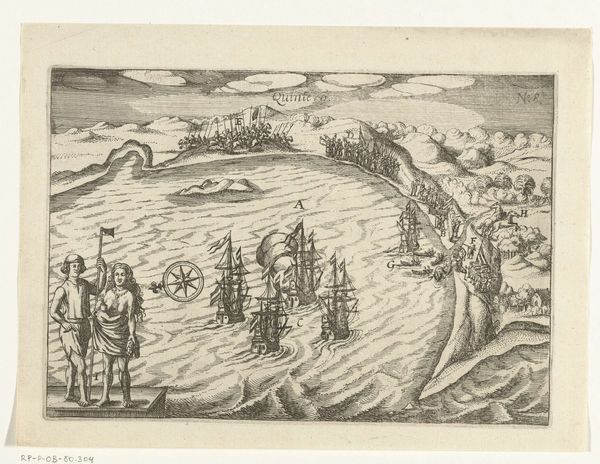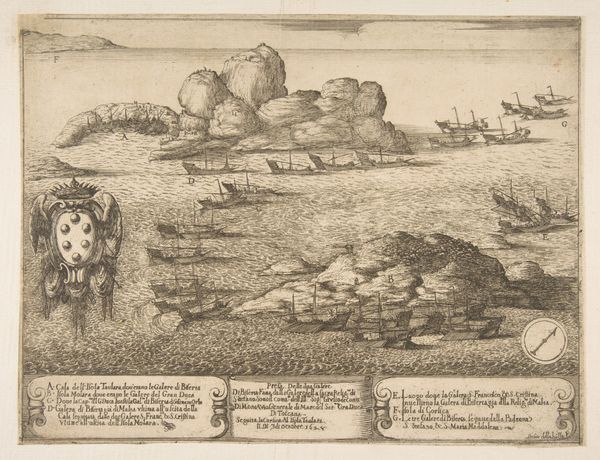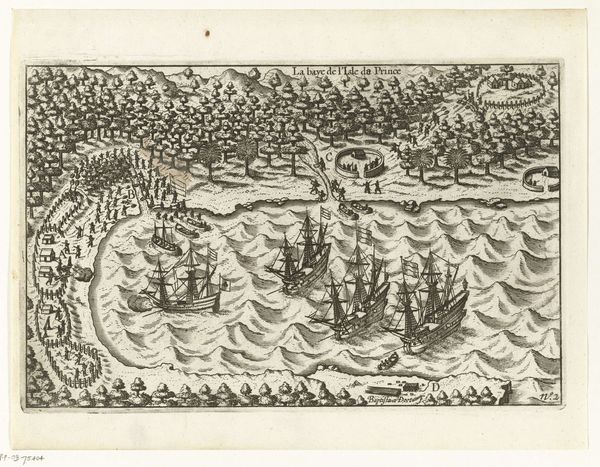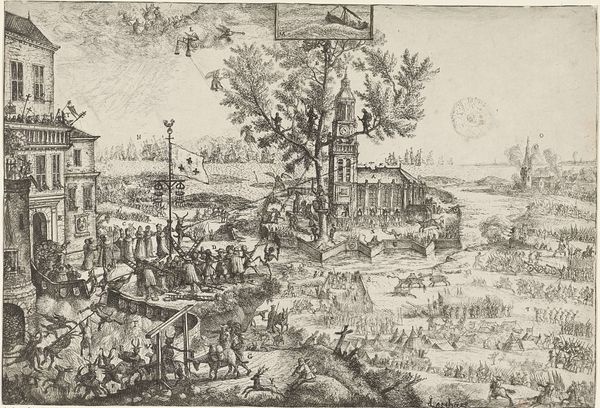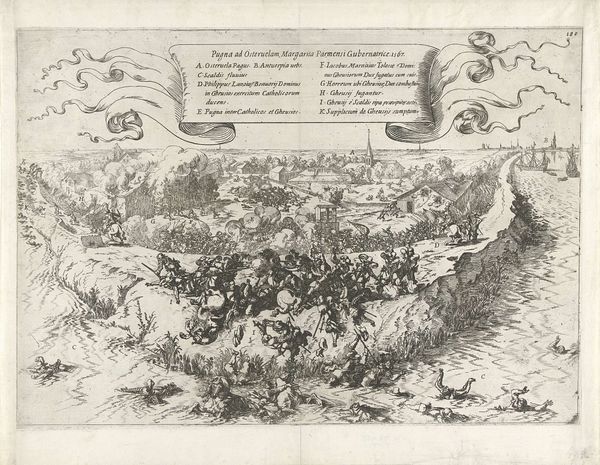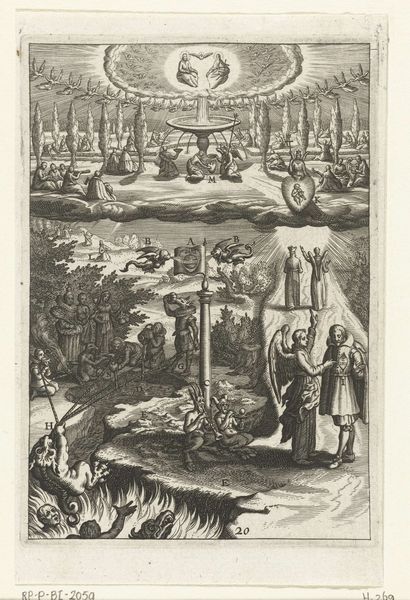
print, engraving
#
baroque
#
pen drawing
# print
#
old engraving style
#
landscape
#
figuration
#
line
#
history-painting
#
engraving
Dimensions: height 294 mm, width 571 mm
Copyright: Rijks Museum: Open Domain
Curator: It feels intensely chaotic, doesn't it? Almost overwhelming with the sheer number of ships and the swirling smoke. Editor: Indeed. What you're experiencing is a glimpse into the past through Willem Swidde's engraving, "Slag in de Sont, 1658," created between 1694 and 1696. It is now part of the Rijksmuseum collection. The engraving depicts a naval battle scene during the Second Northern War. Curator: "Slag in de Sont," The Battle of the Sound, so it directly refers to a moment of violent conflict, meticulously captured here with all its geopolitical weight. The way Swidde uses line, it's almost baroque, a swirl of activity that still leaves one searching for the dominant narrative of that moment. Editor: Well, beyond just depicting the battle, consider how such images functioned. This print, reproduced and distributed, shaped public perception of the war, crafting a narrative of Dutch naval power. The image became a tool of propaganda, cementing a particular viewpoint within the collective memory. We can think of it in terms of today’s media coverage of conflict. Curator: Absolutely. There is so much identity politics at stake, it’s hard to dismiss, I can almost feel how gender, race, and even nascent nationalism are wrapped up in those billowing clouds of smoke and each meticulously rendered ship. How, for instance, might people of different social positions experience it and how differently? Is this battle a success for all, and how does this piece, therefore, also serve as an argument? Editor: Precisely, by understanding the historical context and the institutional forces at play, we can start to understand what the work accomplished for its commissioners. For example, look at the cityscapes nestled at the edges. I would propose this element lends the overall work an extra layer of meaning because it highlights the territories defended by naval battles. Curator: Ultimately, this piece urges us to delve beneath the surface, urging that we consider the power dynamics encoded in artistic portrayals of historical events. Editor: I think exploring how "Slag in de Sont" operated within the complex network of social, political, and representational power adds considerable significance.
Comments
No comments
Be the first to comment and join the conversation on the ultimate creative platform.

